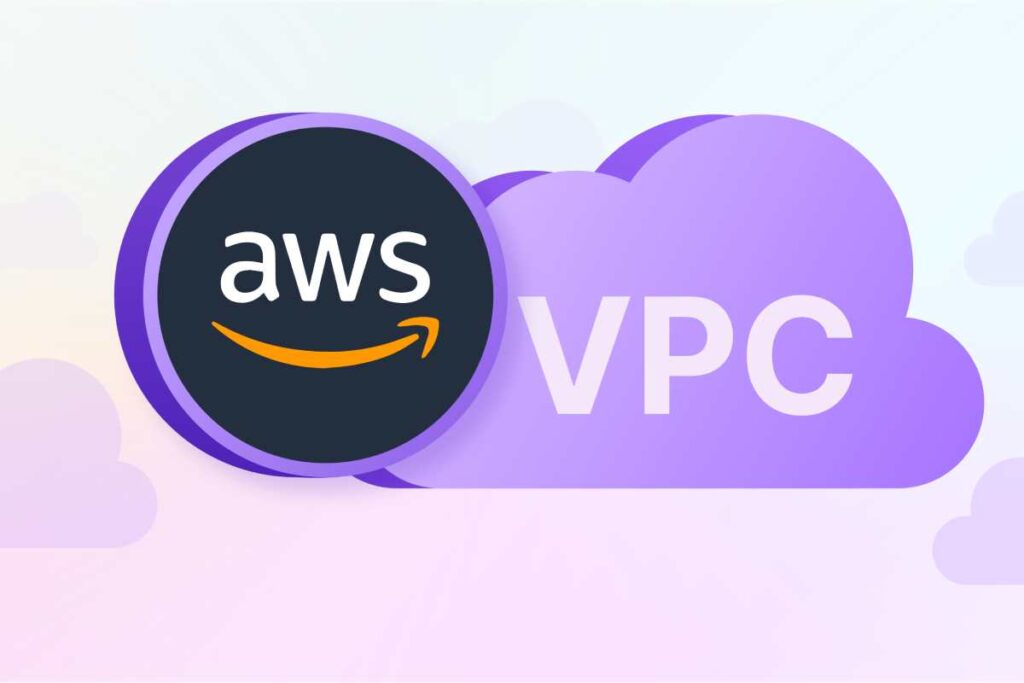Introduction
Amazon Virtual Private Cloud (VPC) remains a mesh facility obtainable by Amazon Mesh Facilities. It allows users to set up a primarily isolated section of the AWS cloud to run and manage their resources.
Additionally, Amazon VPC provides a virtual networking environment that resembles a traditional network that you might use in a private data centre but with the benefits of using AWS’s scalable infrastructure.
How Does Amazon Virtual Private Cloud Work?
One can customize the VPC by:
- IP Range Definition: Creates a single resource space across the vast AWS network, providing isolation and security.
- Create subnets: These are small sections within a VPC where users can group their resources based on their purpose or security requirements.
- Add gateways: These act as entry and exit points for a user’s VPC. This way, they provide precise connectivity to the Internet, other VPCs, or local networks.
- Deploy security groups: These groups describe firewall rules that control the flow of traffic within the VPC and external networks.
Components of Amazon Virtual Private Cloud:
VPC
The user creates a shared network environment. Spreads across all AWS Availability Zones in the selected AWS Region.
Subnet:
This is a set of IP addresses in a VPC. Users can create subnets to organize and manage resources in a VPC.
Route Table:
A set of rules called routes determines the direction of network traffic. Each subnet in a VPC must be associated with a routing bench.
Internet Gateway:
It is a horizontally scalable, redundant, and highly obtainable VPC constituent that connects VPC instances and the Internet. It also facilitates outbound traffic and allows instances to accept inbound traffic.
NAT Gateway/NAT Instance:
Network Address Translation (NAT) allows instances on a private subnet to initiate outbound circulation to Cyberspace while preventing unwanted inbound traffic from reaching it.
Security Groups:
A virtual firewall controls traffic to and from associated Amazon EC2 instances. Additionally, EC2 instances have associated security groups and rules defined to allow traffic based on IP protocols, ports, and source/destination.
Network Access Control Lists (NACLs):
A voluntary security layer for controlling incoming and outgoing traffic on subnets. In addition, NACLs are stateless and evaluate rules based on numbered inputs.
Elastic IP Addresses:
A static IP address designed for energetic mist calculation. It can be associated with an EC2 occasion by providing a permanent public IP address.
Use Cases of Amazon Virtual Private Cloud:
Introducing mission-critical applications that require high security and control.
- Create hybrid cloud environments that connect a user’s on-premises network to the AWS cloud.
- Configuring multi-tier applications with different security requirements.
- Manage large-scale cloud deployments with complex networking requirements.
Benefits of Amazon Virtual Private Cloud:
- Enhanced security: Resources are isolated from other operators and the public Internet, reducing the attack surface and protecting sensitive data.
- Greater control and flexibility: Users have complete control over their network arrangement, allowing them to tailor it to their needs.
- Scalability: The user can quickly expand the VPC as their needs grow by adding more resources and subnets.
- Cost optimization: Users pay only for the resources they use in a VPC, providing cost savings compared to public AWS resources.
Conclusion:
In conclusion, Amazon Virtual Private Cloud is critical to designing scalable, secure, and customizable cloud networks on the AWS platform. By allowing users to create isolated environments, describe IP address ranges, and then manage network components, VPC makes it easy to securely deploy resources for sensitive workloads, hybrid cloud configurations, or scalable applications.
Additionally, with components such as subnets, routing tables, and security groups, VPC allows users to tailor the network architecture to their specific needs. Thus, it provides the flexibility and control required for modern cloud solutions in the AWS ecosystem.
Also Read: What Causes the Blue Screen of Death

